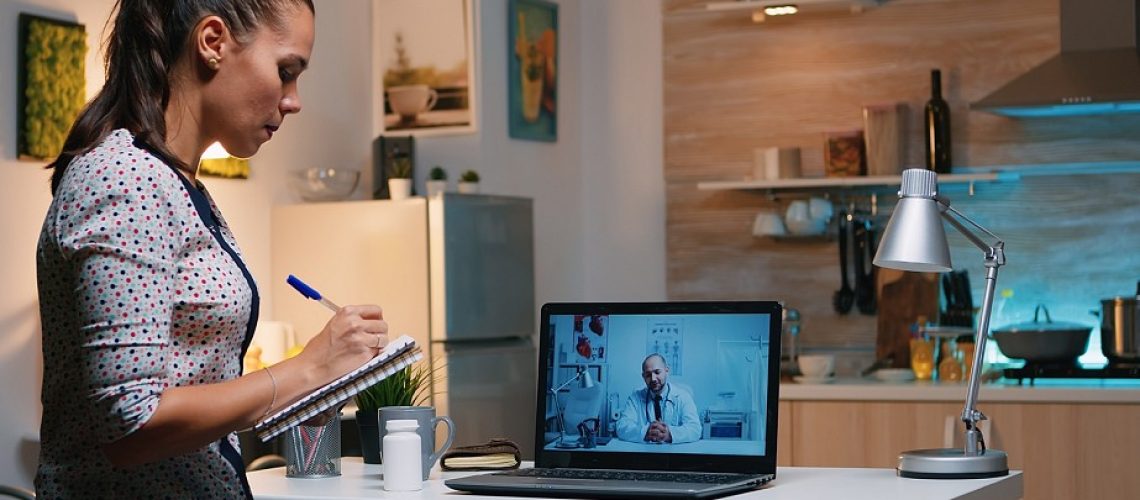Phone call codes during the PHE range from 99441 to 99443, and are all based on time.
In response to the COVID-19 pandemic, the Centers for Medicare & Medicaid Services (CMS) made a number of changes that allowed Medicare beneficiaries to access a wider range of telehealth services without having to travel to a healthcare facility.
When the federal public health emergency (PHE) was extended for another 90 days on Jan., taking us through April 21, so were the Coronavirus Aid, Relief, and Economic Security (CARES) Act flexibilities implemented under the 1135 waiver. This allows for telehealth to continue to be covered under Medicare and many private payors when the patient’s originating site (where they are when services are rendered) is his or her home. Under this temporary mandate, there have been widespread irregularities and fraud schemes reported. Because of this, the U.S. Department of Health and Human Services (HHS) Office of Inspector General (OIG) put telehealth services on its 2021 Work Plan.
This review will be based on Medicare Parts B and C data, and will look at the use of telehealth services in Medicare during the COVID-19 pandemic. It will also scrutinize the extent to which telehealth services are being used by Medicare beneficiaries, how the use of these services compares to the use of the same services delivered in person, and the different types of providers and beneficiaries using telehealth services.
One of the rules of the 1135 waiver is that if the provider is billing for services that have no “video” capabilities, the CPT and HCPCS coding options are either “virtual check-ins” or telephone call visits.
Many practices did not adhere to those rules and billed audio-only services incorrectly as office visits, and now they may be under close scrutiny. With CMS audits restarting last August, medical practices need to self-audit their telehealth services to make sure they can withstand an external audit.
The following question was posted on the CMS FAQ Sheet in April 2020 and again in September 2020, with the same response given:
Question: What are requirements to use regular office visit codes (i.e. new patient codes, 99201-99205, and established patient codes 99212-99215) with telehealth? Can regular office visit codes be used for just a phone call between the provider and the patient, that does not include video capability?
Answer: No. The provider must use telecommunication application, which mandates audio AND visual, under the Waiver 1135. They can use their smart phone or cell phone for the doctor-to-patient phone calls, and most cell phones have a video chat option. (i.e. FaceTime, Skype, Google Duo, Facebook Video Chat). The CPT codes for these services are found under codes 99441-99443. Again, these codes are for temporary use during the PHE, as CMS does not reimburse for phone calls when there is no PHE.
CMS also added audio-only phone calls to the telehealth list for billing purposes with the 95-modifier. This modifier should be appended for any approved telehealth service.
In the CMS chart below, there is a clear difference between office visits, phone call visits, eVisits, and patient portal visits.
From CMS.gov
Using the virtual check-ins during the PHE can be confusing. Keep these guidelines in mind when choosing the code:
Remember the difference between the phone call codes and the virtual check-ins, once the PHE ends:
The phone call codes during the PHE range from 99441-99443, and are all based on time. Once the PHE ends, Medicare has created a HCPCS code for 2021 (G2252), and it is to be utilized for patients who do not have access to audio and video technology, and for “medical discussion…when the acuity of the patient’s problem is not necessarily likely to warrant a visit, but when the needs of the particular patient require more assessment time from the practitioner than the G2012” (per CMS comments in the 2021 final rule).
The virtual check-ins (G2012 and G2010), in contrast, were created as a brief audio-only or picture-only encounter to determine whether the need for an office visit exists. If, after, the physician or QHP has a medical discussion with the patient and is given treatment advice and no follow-up visit, this is reported. If, however, the patient is scheduled for the soonest available appointment, or comes to the clinic for an appointment within seven days or was seen in the past seven days, this is not reported.
The expansion of telehealth and the revisions of the rules during PHE were considerable, but for the majority of it, temporary. For more insight into telehealth services, including what’s covered now and after the PHE ends, join us on Thursday, Jan. 28 for our webcast: “Telehealth: Learn How to Stay Compliant and Protect Reimbursement in 2021.”
——————————————————
Photo courtesy of: ICD10 Monitor
Originally Published On: ICD10 Monitor
Follow Medical Coding Pro on Twitter: www.Twitter.com/CodingPro1
Like Us On Facebook: www.Facebook.com/MedicalCodingPro







